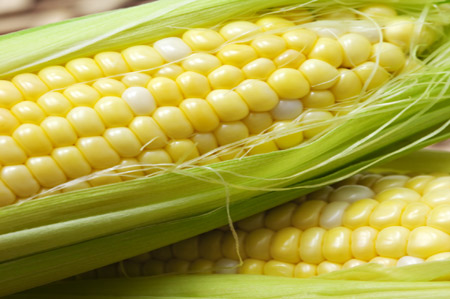Rain eases drought as Midwest corn harvest unfolds
Category: Grains
 (Businessweek) – Recent rainfall came too late to help to the nation’s withered corn crop already being harvested in many parts, but it kept drought conditions from worsening in several key Midwest and Plains states and should help other crops still maturing in the fields.
(Businessweek) – Recent rainfall came too late to help to the nation’s withered corn crop already being harvested in many parts, but it kept drought conditions from worsening in several key Midwest and Plains states and should help other crops still maturing in the fields.
The U.S. Drought Monitor released its weekly map on Thursday that showed the area of Nebraska deemed to be in extreme or exceptional drought — the two most severe categories — held steady during the seven-day period ending Tuesday, at 97.4 percent. Kansas remained unchanged, at 88.34 percent, and Illinois showed little change, coming in at 6.67 percent.
The latest report came a day after the U.S. Department of Agriculture slightly lowered its estimate for the nation’s average corn per acre yield, pegging it at its lowest point since 1995. With the U.S. enduring its worst drought in decades, corn and soybean prices have soared this summer amid worries of tighter supplies of the commodities. Major corn users — livestock farmers, the ethanol industry and other countries importing it — will be forced to negotiate their level of use, a sort of market rationing that takes place in years of low supply.
Thursday’s drought update showed two-thirds of Iowa, which grows more corn than any state, are now in extreme or exceptional drought. While the area deemed in exceptional drought, which is the most severe designation, remained the unchanged at 2.4 percent of the state, the area in extreme drought rose slightly.
Conditions improved in Missouri, where the area deemed to be in extreme or exceptional drought dropped more than 6 percentage points, to 25.20 percent.
The land area in the lower 48 states in extreme or exceptional drought remained at about 21 percent.
Storms that rumbled across portions of the Corn Belt in recent weeks from Hurricane Isaac’s fallout and subsequent storms have contributed moisture that growers say could benefit still-maturing soybean fields.
As of Monday, the USDA said 15 percent of the nation’s corn crop had been brought it from the fields, three times the five-year average. The harvesting is more than halfway completed in Missouri, where this time each year just 15 percent of the corn has been reaped. Farmers have harvested 41 percent of their corn in Kansas, 21 percent in Illinois, 12 percent in Nebraska and 10 percent in Iowa.
Fifty-two percent of the nation’s corn crop was listed as being in poor or very poor shape as of Monday, unchanged from a week earlier, the USDA said. Soybean harvests are just 4 percent complete, with 36 percent of that overall crop considered poor or very poor, just 1 percent better than a week earlier.
In its crop-expectation update Wednesday, the USDA kept its estimate of the total area of corn harvested for grain at 87.4 million acres, bucking predictions from some analysts that the figure would drop given reports of farmers chopping down underdeveloped corn plants to feed their livestock. But the yield per acre estimate this month dropped from 123 bushels last month to 122.8 bushels.
Farmers planted more corn this year than in any other since 1937, meaning that despite one of the nation’s worst droughts in decades the U.S. is expected to produce its eighth largest corn crop on record.
Total corn production for this season is now forecast at 10.73 billion bushels, down slightly from last month’s estimate. Farmers planted about 96 million acres in corn, a large increase from just a decade ago when less than 80 million acres were planted.
Wednesday’s report is expected to stabilize corn prices, which have been at near record highs, and to help farmers who depend on the grain to feed livestock.
Soybean production was projected at 2.63 billion bushels in the report, down 58 million from last month’s estimate due to lower yields in the Midwest.
___
Associated Press writer David Pitt contributed to this report from Des Moines, Iowa.




